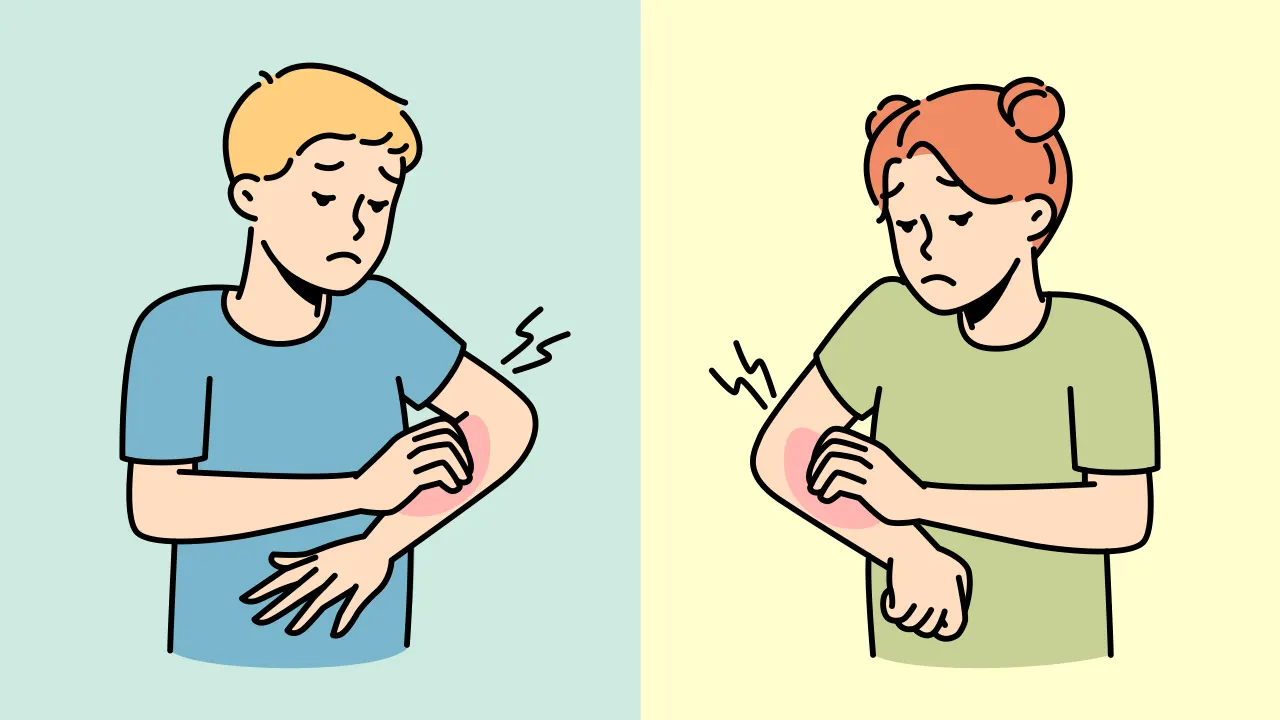Atopic Dermatitis: Understanding Causes, Recognizing Symptoms, and Proper Care by Dr. Niorn Boonpuean
Atopic Dermatitis (AD) is a chronic inflammatory skin condition that is a source of concern for many families, especially those with young children. However, this condition can also be found in adults, causing itching, irritation, and significantly impacting quality of life. A deep understanding of the disease and the correct approaches to care and treatment are therefore crucial for controlling symptoms and preventing complications.
Today, we will delve into the topic of atopic dermatitis with valuable information from Dr. Niorn Boonpuean, a Senior Expert Physician at the Institute of Dermatology, and a specialist in pediatric dermatology and skin diseases.
What is Atopic Dermatitis? What are its causes?
Dr. Niorn Boonpuean, a specialist in pediatric and adult dermatology with over 10 years of experience, explains that atopic dermatitis is a condition caused by a defective skin barrier. This makes the skin dry, prone to moisture loss, and more sensitive to external triggers than normal. It is also related to an immune system that overreacts to certain stimuli, as well as genetic factors, which are the most significant contributor. If family members have a history of other allergic diseases like asthma, allergic rhinitis, or food allergies, the patient has a higher chance of developing this condition.
Summary of Main Causes and Triggers:
- Genetics: A family history of allergies (asthma, allergic rhinitis, food allergies).
- Defective Skin Barrier: A deficiency in key proteins (like Filaggrin) causes the skin to dry out easily, allowing irritants and allergens to penetrate.
- Dysfunctional Immune System: The body overreacts to stimuli.
- External Triggers:
- Allergens: Dust mites, pollen, animal dander, mold, certain foods.
- Irritants: Soaps, detergents, perfumes, chemicals, wool clothing.
- Climate: Dry air, extreme cold, extreme heat, heavy sweating.
- Infections: Especially the bacterium Staphylococcus aureus.
- Stress: Can cause flare-ups.
Observing the Symptoms: What Does Atopic Dermatitis Look Like??
The symptoms of atopic dermatitis vary with age, but the main symptom that is always present is very dry and itchy skin, which often leads to scratching and subsequent problems.
- Infancy (2-3 months and older): A red rash with small bumps or dry patches, often appearing on the face, cheeks, elbows, and outer knees, as well as areas of friction. Infants will be very itchy and irritable.
- Childhood (after 2 years): The rash typically appears in the creases of the body, such as the elbows, knees, and the nape of the neck. The skin in the affected areas may thicken, become scaly, and darken due to chronic scratching (lichenification).
- Adulthood: The rash is similar to that in childhood. In some individuals, symptoms may improve or disappear with age, but for others, they persist.
Diagnosis and Treatment of Atopic Dermatitis by a Specialist
Dr. Niorn Boonpuean emphasizes that the treatment of atopic dermatitis should be under the care of a dermatologist for an accurate diagnosis and the most appropriate treatment plan.
Main Treatment Approaches:
- Moisturizing the Skin (Moisturizer): This is the most important step. Moisturizer should be applied daily, at least 2-3 times, especially immediately after bathing. Choose products with no perfume, color, or alcohol, or other irritants to strengthen the skin barrier.
- Anti-Inflammatory Topicals:
- Topical Steroids:Highly effective at reducing inflammation. Use only as directed by a doctor. The medication should be stopped once the rash clears to prevent side effects.
- Non-steroidal anti-inflammatory topicals (Calcineurin Inhibitors):Can be used long-term or on sensitive skin areas.
- Oral Medications:In severe cases, a doctor may consider prescribing antihistamines or other medications to control symptoms.
- Controlling Triggers:Avoid things that cause the rash to flare up.
- Preventing and Treating Infections:If a secondary infection occurs, the doctor may prescribe antibiotics.
In some patients with very severe atopic dermatitis that does not respond to standard treatments, the doctor will consider other approaches in consultation with the patient and caregivers, such as phototherapy, oral immunosuppressive drugs, and biologic injections specifically indicated for atopic dermatitis.
Advice and Self-Care: Living a Normal Life with Atopic Dermatitis
To improve treatment outcomes and prevent flare-ups, Dr. Niorn Boonpuean recommends the following self-care practices:
- Proper Bathing Technique: Bathe no more than twice a day, use lukewarm (not hot) water, and use a gentle, colorless, fragrance-free, non-foaming cleanser. Apply moisturizer immediately after bathing.
- Avoid Scratching: Keep nails short, or have young children wear mittens.
- Choose Appropriate Clothing: Soft, breathable cotton fabrics that are not tight-fitting.
- Manage Stress: Relaxation can help reduce symptom flare-ups.
- Consult Your Doctor Regularly: To monitor symptoms and adjust the treatment plan.
- Avoid Risk Factors: Dust mites, cigarette smoke, and drastic temperature changes.
Conclusion: Living Happily with Atopic Dermatitis
Although atopic dermatitis is a chronic condition requiring ongoing care, with the right understanding, adherence to a doctor's advice, and consistent self-care, symptoms can be controlled, severity reduced, and complications effectively prevented. If you or a family member has symptoms of atopic dermatitis, do not hesitate to consult an expert dermatologist to receive the most accurate diagnosis and appropriate treatment plan for a better quality of life.
Tel. 0863434562
Line@: @lullalitaclinic
Map: https://maps.app.goo.gl/evBBKvU7ntgvTq9S8





